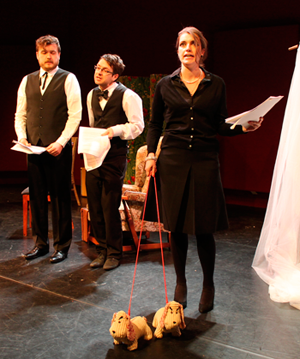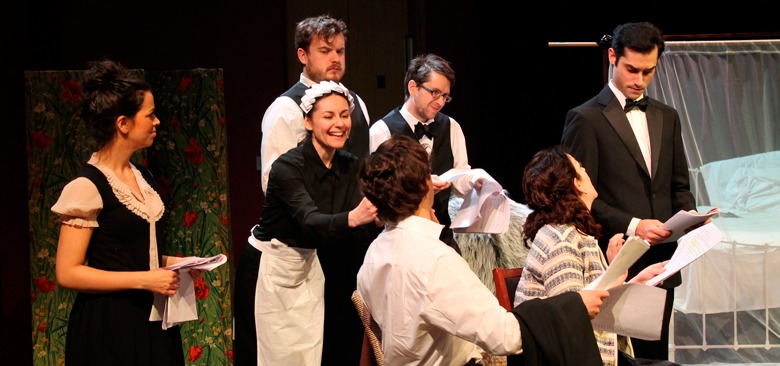The title of Jardiel Poncela’s most popular work conjures up a pastoral image, quite middle class. A sleepy little girl in a springtime garden, stood beneath a flowering tree… It’s not until the very end that the audience finds out that the title is actually referring to the place where a body has been buried — that little girl from the pastoral image was actually the victim of a family of lunatics and a class system in which social appearances don’t quite mirror the truth.
The title of Jardiel Poncela’s most popular work conjures up a pastoral image, quite middle class. A sleepy little girl in a springtime garden, stood beneath a flowering tree… It’s not until the very end that the audience finds out that the title is actually referring to the place where a body has been buried — that little girl from the pastoral image was actually the victim of a family of lunatics and a class system in which social appearances don’t quite mirror the truth.
The title’s double meaning, between idyllic happiness and the most sinister neuroses of the upper middle classes, is present throughout the work, in an argument that links together the difficulties of two family sagas, the sparkling innocence of a first love, the humour typical of a comedy of errors and the first glimmers of a grotesque situationism, a precursor to the Theatre of the Absurd.
We were expecting to see a reading of the work, but what the Spanish Theatre Company did exceeded all expectations — an action-packed performance portrayed by a young and charismatic cast, all under the skilful direction of Jorge de Juan.

Sergio Maggiolo, Tom Redicam y Paula Rodríguez en el escenario
As the first act opens, a voice off-stage describes the Briones’ house, while the illustrator Ángel Haro’s hand starts skilfully drawing an impossible space, jam-packed with furniture, trinkets and bric-a-brac. This hilarious description has us in stitches.
We were wondering how Poncela would sound when translated into English, and this was another nice surprise. In fact, there’s a certain impassivity to his humour, it’s sharp and clever which is easy to translate into British culture, not to mention their preference for eccentric characters.
The Spanish Theatre Company have not only shown us that Poncela’s theatre is brilliant in another language, but also in another time, played out by a whole new generation of actors. Amongst them, Lana Joffrey’s portrayal of Clotilde really stood out, as did Sergio Maggiolo as the old and faithful servant Dimas, Simon Rodda como Fermín, the young butler on the verge of a nervous breakdown, Paula Rodríguez as Micaela, inseparable from her pets, and Blake Kubena as the handsome Ezequiel. After an evening spent wondering who Eloísa would turn out to be and aching with laughter, an evening where convention went out the window, we’re already eagerly awaiting the company’s next projects.

